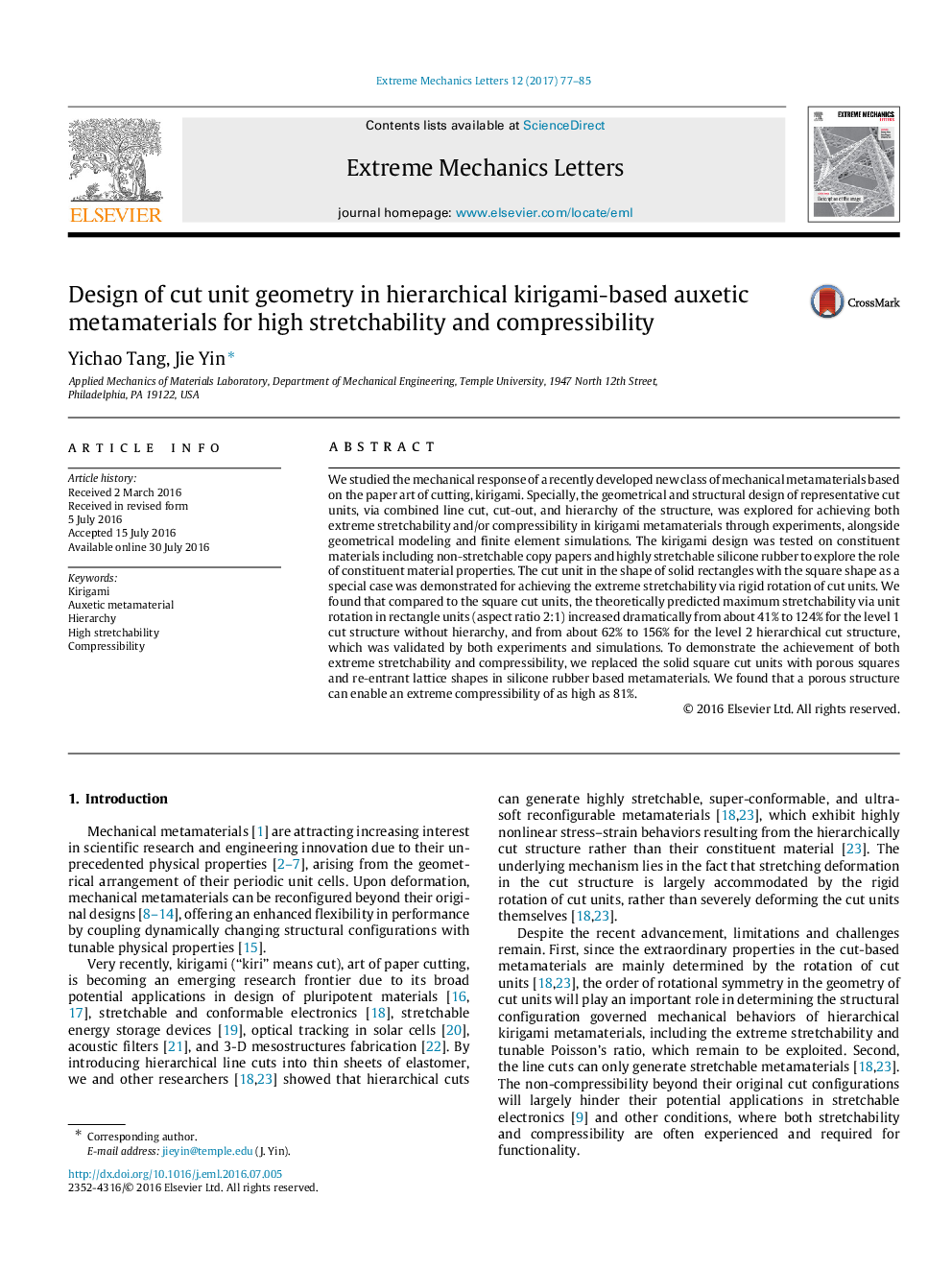| Article ID | Journal | Published Year | Pages | File Type |
|---|---|---|---|---|
| 5014462 | Extreme Mechanics Letters | 2017 | 9 Pages |
We studied the mechanical response of a recently developed new class of mechanical metamaterials based on the paper art of cutting, kirigami. Specially, the geometrical and structural design of representative cut units, via combined line cut, cut-out, and hierarchy of the structure, was explored for achieving both extreme stretchability and/or compressibility in kirigami metamaterials through experiments, alongside geometrical modeling and finite element simulations. The kirigami design was tested on constituent materials including non-stretchable copy papers and highly stretchable silicone rubber to explore the role of constituent material properties. The cut unit in the shape of solid rectangles with the square shape as a special case was demonstrated for achieving the extreme stretchability via rigid rotation of cut units. We found that compared to the square cut units, the theoretically predicted maximum stretchability via unit rotation in rectangle units (aspect ratio 2:1) increased dramatically from about 41% to 124% for the level 1 cut structure without hierarchy, and from about 62% to 156% for the level 2 hierarchical cut structure, which was validated by both experiments and simulations. To demonstrate the achievement of both extreme stretchability and compressibility, we replaced the solid square cut units with porous squares and re-entrant lattice shapes in silicone rubber based metamaterials. We found that a porous structure can enable an extreme compressibility of as high as 81%.
